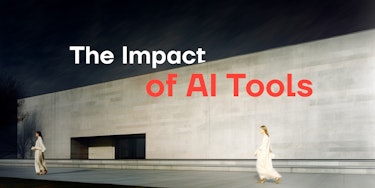The intersection of artificial intelligence (AI) and architecture has ushered in a new era of innovation, reshaping the way architects conceptualize, design, and construct buildings. As we delve into the year 2024, the impact of AI tools on architecture becomes increasingly pronounced, fostering a paradigm shift that not only enhances efficiency but also sparks unprecedented levels of creativity. This essay explores the multifaceted influence of AI tools on architecture, with a focus on design innovation, computational creativity, and the integration of sustainable solutions.
Design Innovation through AI
The integration of AI tools in architecture has redefined the conventional design process, propelling architects beyond the boundaries of human imagination. AI algorithms, fueled by vast datasets and machine learning capabilities, enable architects to generate design solutions that are not only aesthetically pleasing but also optimized for functionality and user experience. AI-driven design innovations are characterized by their ability to analyze complex data sets, identify patterns, and propose alternative design iterations.
AI tools, such as generative design algorithms, facilitate the exploration of countless design possibilities based on predefined parameters. This iterative process allows architects to fine-tune and optimize designs with unprecedented speed and precision. The result is a departure from traditional design methodologies, giving rise to structures that are both visually striking and functionally superior.

Sustainable Solutions through AI
The imperative for sustainable architecture has never been more urgent, and AI tools play a pivotal role in advancing environmentally conscious design practices. With the ability to process vast amounts of data related to energy consumption, material efficiency, and environmental impact, AI empowers architects to make informed decisions that prioritize sustainability.
AI-driven simulations and predictive modeling assist architects in evaluating the environmental performance of their designs. These tools analyze factors such as solar exposure, wind patterns, and thermal dynamics to optimize building orientation, materials, and energy systems. By integrating sustainability considerations from the early stages of design, architects can create buildings that not only minimize their ecological footprint but also contribute positively to their surroundings.
.jpg?ixlib=gatsbyFP&auto=compress%2Cformat&fit=max&q=75&w=375)
Human-AI Collaboration in Architecture
The integration of AI tools in architecture does not diminish the role of human creativity but rather enhances it. The collaborative synergy between architects and AI fosters a dynamic environment where each party brings its unique strengths to the table. Architects leverage AI for data-driven insights, automated design processes, and complex problem-solving, while retaining their creative intuition and contextual understanding.
Moreover, AI tools contribute to a more inclusive design process by analyzing diverse datasets and considering a broad spectrum of user needs. The result is architecture that is not only visually compelling but also responsive to the diverse requirements of the communities it serves. Human-AI collaboration thus emerges as a cornerstone of architectural innovation in 2024, combining the strengths of both entities to achieve unprecedented levels of design excellence.

Challenges and Ethical Considerations
Despite the myriad benefits, the integration of AI tools in architecture also poses challenges and ethical considerations. Concerns related to data privacy, algorithmic bias, and the potential for job displacement within the architectural profession require careful consideration. Architects must navigate these challenges responsibly, ensuring that AI is employed as a tool for augmentation rather than a replacement for human expertise.

In conclusion, the impact of AI tools on architecture in 2024 is profound and transformative. From design innovation and computational creativity to the integration of sustainable solutions, AI has become an indispensable partner for architects seeking to push the boundaries of what is possible. The collaborative synergy between human creativity and AI-driven computational power opens up new avenues for architectural excellence, creating a future where buildings are not only functional and aesthetically pleasing but also environmentally sustainable and socially inclusive.
